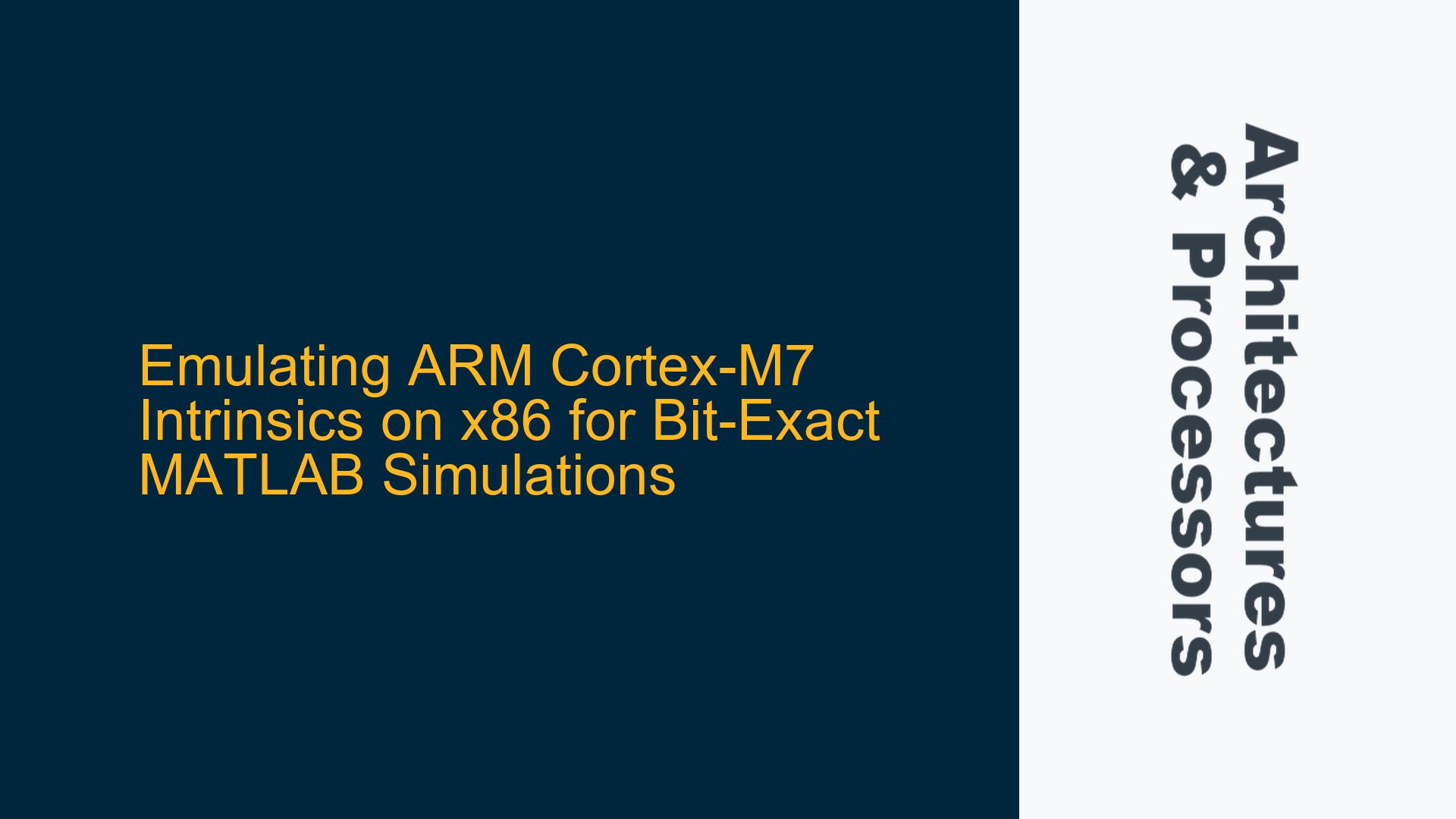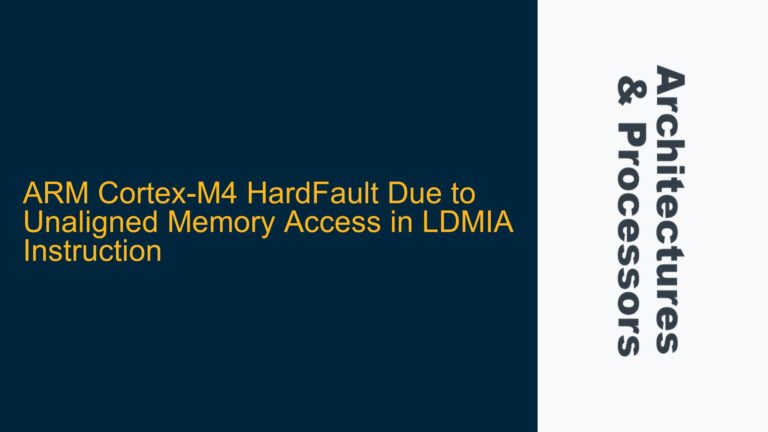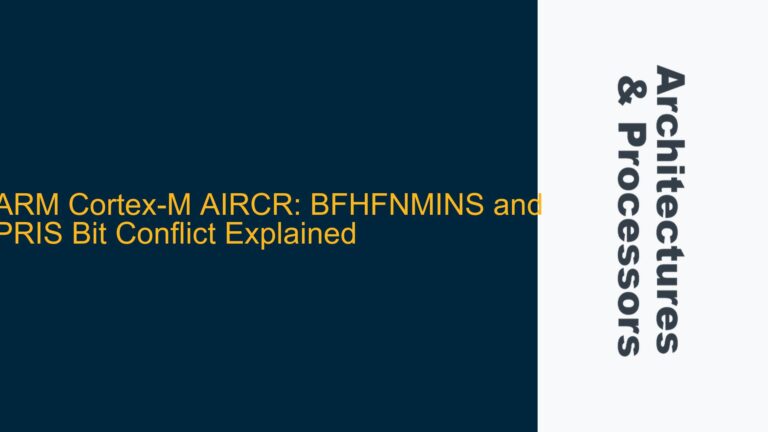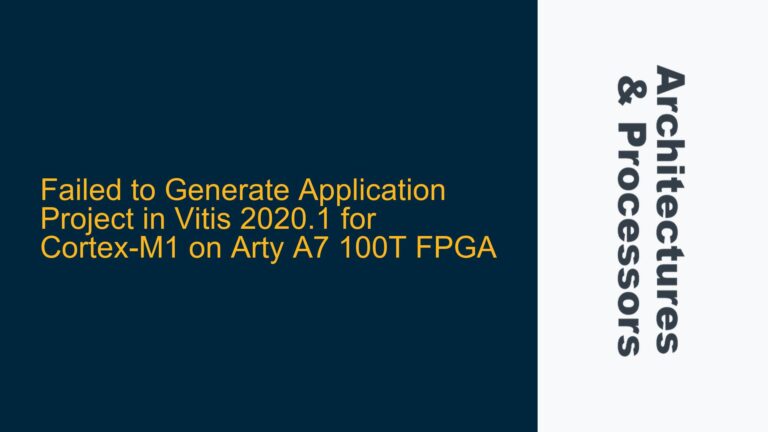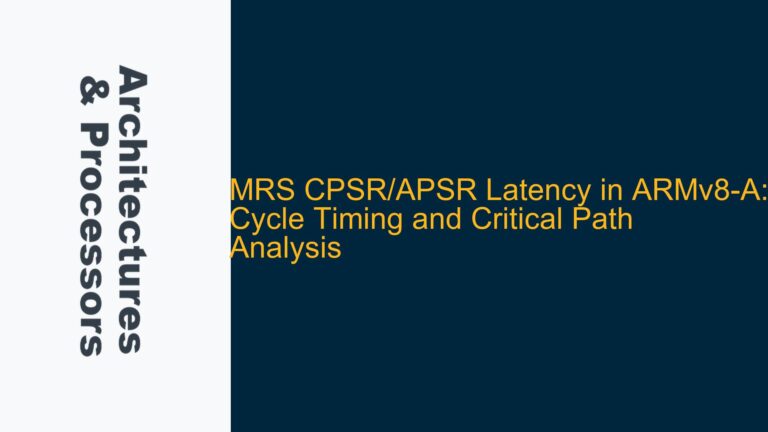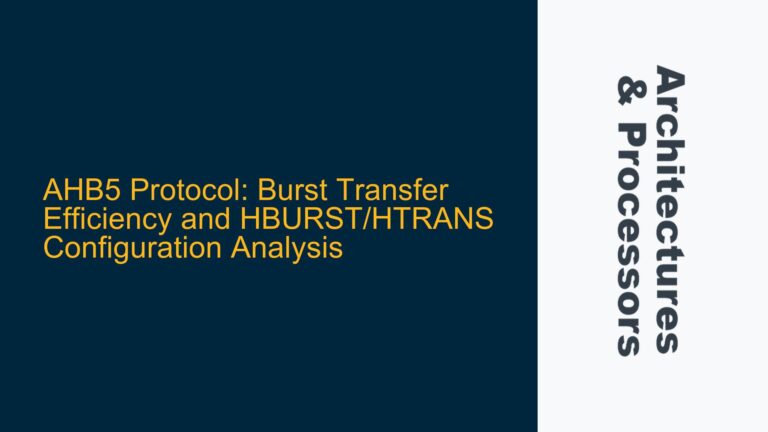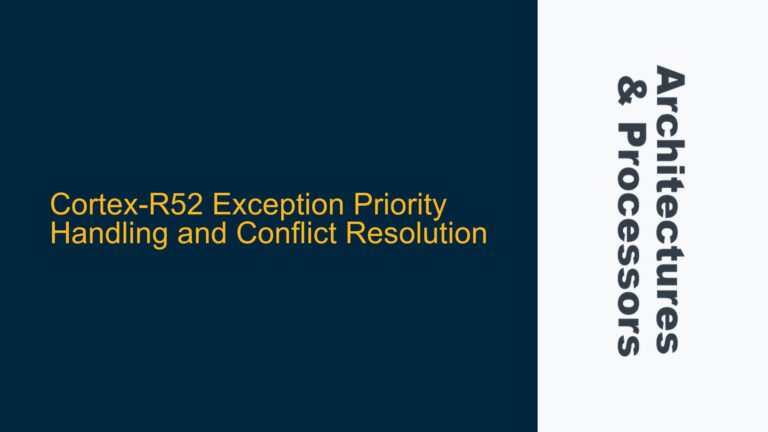ARM Cortex-M7 Intrinsics and SIMD Instructions in MATLAB Simulations
The core issue revolves around the challenge of emulating ARM Cortex-M7 intrinsics and SIMD (Single Instruction, Multiple Data) instructions on an x86 architecture to maintain bit-exactness in MATLAB simulations. The original algorithms were developed and qualified in MATLAB using "pure" C code, which was then encapsulated in MATLAB mex functions to run on x86 PCs. However, when these algorithms were optimized using ARM Cortex-M7 intrinsics and SIMD instructions for deployment on an STM32H7 microcontroller, the code became incompatible with the x86-based MATLAB simulation environment. The goal is to find a solution that allows the same source code to be compiled and executed on both ARM Cortex-M7 and x86 architectures without sacrificing bit-exactness, which is critical for maintaining the integrity of the simulation results.
The ARM Cortex-M7 processor is known for its high performance, particularly in signal processing applications, due to its support for SIMD instructions and DSP extensions. These optimizations are crucial for achieving real-time performance on embedded systems. However, when the same code is ported to an x86 architecture, the lack of direct support for ARM-specific intrinsics and SIMD instructions creates a compatibility issue. This is particularly problematic in scenarios where the simulation environment must remain consistent across different platforms to ensure that the algorithms behave identically in both simulation and real-world deployment.
The primary challenge lies in the fact that ARM Cortex-M7 intrinsics and SIMD instructions are highly specialized and optimized for the ARM architecture. These instructions are designed to leverage the specific hardware capabilities of the Cortex-M7, such as its dual-issue pipeline, floating-point unit (FPU), and DSP extensions. When these instructions are used in the code, they cannot be directly translated or executed on an x86 architecture, which has a completely different instruction set and hardware architecture. This incompatibility necessitates a solution that can either emulate the ARM intrinsics on x86 or provide a cross-platform compatible implementation that maintains bit-exactness.
ARM Intrinsics Incompatibility and x86 Emulation Challenges
The incompatibility between ARM Cortex-M7 intrinsics and x86 architecture stems from several factors. First, ARM intrinsics are tightly coupled with the ARM instruction set architecture (ISA), which is fundamentally different from the x86 ISA. ARM intrinsics often map directly to specific ARM instructions that have no direct equivalent in the x86 instruction set. For example, the ARM Cortex-M7 supports SIMD instructions through its DSP extensions, which allow for parallel processing of multiple data elements within a single instruction. These instructions are not natively supported on x86, making it difficult to achieve the same level of parallelism and performance without significant modifications to the code.
Second, the ARM Cortex-M7’s FPU and DSP extensions are optimized for low-power, high-performance embedded applications. The x86 architecture, while powerful, is optimized for general-purpose computing and does not have the same level of specialization for signal processing tasks. This difference in optimization goals means that even if the ARM intrinsics could be emulated on x86, the resulting code would likely be inefficient and could potentially introduce discrepancies in the simulation results.
Third, the MATLAB simulation environment relies on the ability to compile and execute C code on x86 PCs. When ARM intrinsics are introduced into the code, the MATLAB mex functions can no longer be compiled for x86, as the compiler does not recognize the ARM-specific instructions. This creates a barrier to maintaining a single codebase that can be used across both simulation and deployment environments.
To address these challenges, several approaches can be considered. One approach is to use an emulation library that provides C implementations of ARM intrinsics, allowing the same source code to be compiled for both ARM and x86 architectures. Another approach is to use a virtual platform or simulation tool that can emulate the ARM Cortex-M7 on an x86 PC, providing a more accurate representation of the target hardware. Each of these approaches has its own set of trade-offs, which must be carefully evaluated to ensure that the solution meets the requirements for bit-exactness and compatibility.
Implementing ARM Intrinsics Emulation and Cross-Platform Compatibility
To achieve bit-exactness and cross-platform compatibility, the first step is to identify or create a C library that emulates ARM Cortex-M7 intrinsics on x86. This library would provide equivalent functionality for ARM-specific instructions, allowing the same source code to be compiled and executed on both ARM and x86 architectures. The emulation library should be designed to replicate the behavior of ARM intrinsics as closely as possible, ensuring that the simulation results remain consistent across platforms.
One potential solution is to use the ARM Fast Models, which provide a virtual platform for simulating ARM processors on x86 PCs. The ARM Fast Models include a cycle-accurate simulation of the Cortex-M7, allowing developers to run their code in a simulated environment that closely mimics the behavior of the actual hardware. This approach has the advantage of providing a high level of accuracy, as the simulation includes all the details of the Cortex-M7’s architecture, including its pipeline, FPU, and DSP extensions. However, this approach may require significant changes to the existing simulation environment and could be resource-intensive in terms of both time and computational power.
Another approach is to use a C library that provides equivalent implementations of ARM intrinsics for x86. This library would replace ARM-specific instructions with equivalent C code that can be compiled and executed on x86. For example, ARM SIMD instructions could be replaced with equivalent scalar operations that perform the same calculations but without the parallelism. While this approach may result in slower performance on x86, it would maintain bit-exactness and allow the same source code to be used across both platforms.
When implementing an emulation library, it is important to consider the following steps:
-
Identify the ARM Intrinsics Used in the Code: The first step is to identify all the ARM intrinsics and SIMD instructions used in the code. This includes both standard ARM intrinsics and any custom instructions that may have been added for specific optimizations. Once the intrinsics have been identified, their functionality must be understood in detail to ensure that the emulation library provides equivalent behavior.
-
Develop Equivalent C Implementations: For each ARM intrinsic, develop an equivalent C implementation that can be compiled and executed on x86. This may involve breaking down SIMD instructions into scalar operations or using existing x86 libraries that provide similar functionality. The goal is to replicate the behavior of the ARM intrinsics as closely as possible, ensuring that the simulation results remain consistent.
-
Integrate the Emulation Library into the MATLAB Simulation Environment: Once the emulation library has been developed, it must be integrated into the MATLAB simulation environment. This may involve modifying the MATLAB mex functions to use the emulation library instead of the ARM intrinsics. The integration process should be carefully tested to ensure that the simulation results remain bit-exact and that the performance is acceptable.
-
Validate the Emulation Library: The final step is to validate the emulation library by comparing the simulation results with those obtained from the actual ARM Cortex-M7 hardware. This validation process should include a wide range of test cases to ensure that the emulation library behaves correctly in all scenarios. Any discrepancies should be investigated and resolved to ensure that the simulation results remain consistent across platforms.
In addition to the emulation library, it may also be necessary to consider other tools and techniques to achieve cross-platform compatibility. For example, the use of conditional compilation can allow the same source code to be compiled for both ARM and x86 architectures, with different code paths selected based on the target platform. This approach can help to minimize the changes required to the existing codebase while still maintaining compatibility across platforms.
Another consideration is the use of fixed-point arithmetic, which is often used in signal processing applications to improve performance and reduce power consumption. Fixed-point arithmetic can be more challenging to implement in a cross-platform manner, as the behavior of fixed-point operations can vary between architectures. However, with careful implementation and testing, it is possible to achieve bit-exact results using fixed-point arithmetic on both ARM and x86 platforms.
In conclusion, emulating ARM Cortex-M7 intrinsics on x86 for bit-exact MATLAB simulations is a complex but achievable goal. By developing an emulation library that provides equivalent functionality for ARM intrinsics, it is possible to maintain compatibility across platforms while ensuring that the simulation results remain consistent. The key to success lies in careful planning, thorough testing, and a deep understanding of both the ARM and x86 architectures. With the right approach, it is possible to achieve the desired level of bit-exactness and cross-platform compatibility, enabling seamless integration between simulation and deployment environments.
